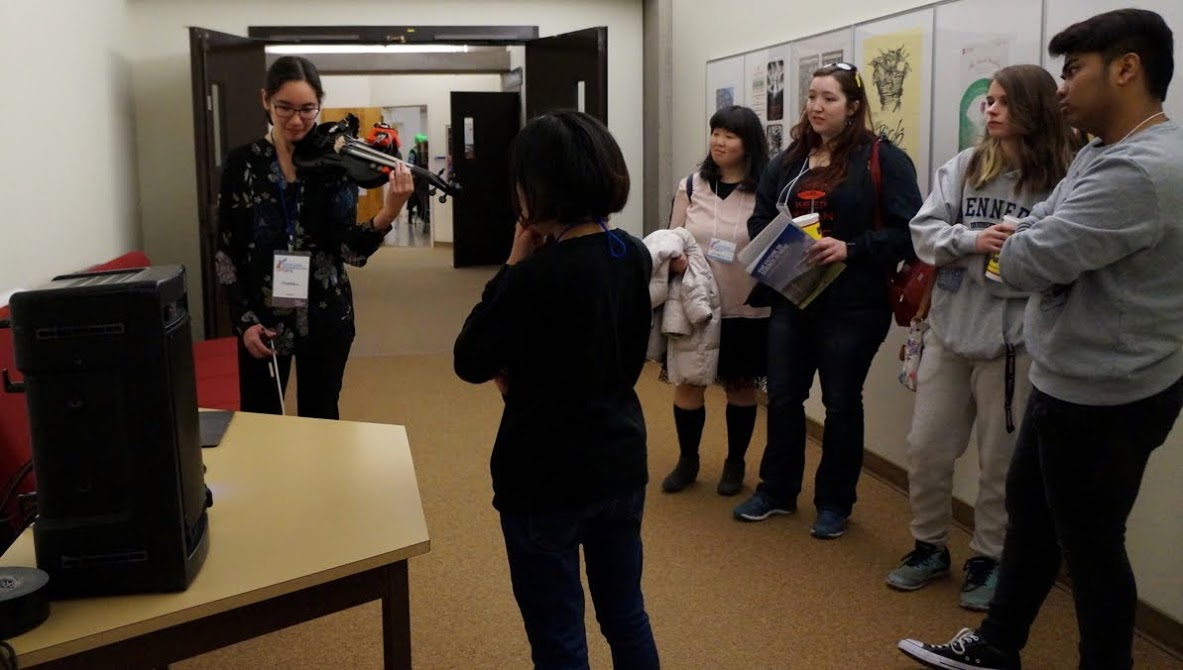|
I've been told by my classmates that the unprocessed sound is much louder in this recording than it was in person. This is because the hanging mics on stage were used to record the sound for the camera, so the processed sound from the speakers is not as present.
Settings (banged by FSR2): 1) Sound FX: Flange [sogs~] Samples: G = Shattering Glass; E = Birds 2) Sound FX: Flange, Delay [sogs~] Samples: G = Shattering Glass; E = Birds 3) (Artificial Harmonics section) Sound FX: Flange, Delay [sogs~] Samples: G = Chimes 4) (Pizz Section) Start Live Recording. Four 10sec samples, one after another. The sound that is affected by the sound fx are the ones being recorded, not the raw sound. Sound FX: Flange, Delay, Pitch Shift [sogs~] Samples: G = Bells 5) (High E Section) FSR1 starts the playback of each live recorded sample. I am using the [urn] object to make it randomly select which recording. There is a delay so that with one bang, 4 sec later it bangs a second time. The already affected samples are being pushed through the fx again. Sound FX: Flange, Delay, Pitch Shift, Chorus [sogs~] Samples: OFF 6) Sound FX: Flange, Delay, Pitch Shift, Chorus [sogs~] Samples: G = Bells; E = Birds I did not delete the capability for FSR1 to select the scaling parameters for the Softpots, or the Artificial C string. However, for this piece, they were creatively unneeded. I had left the Softpots scaled from 0-1023, and 1024-2046. Maybe I'll use the different Softpot settings and the C string for the next piece.
0 Comments
Leave a Reply. |
Welcome to the TRAVIS blog!If you would like to see a summary of my work, please click here. Archives
May 2022
Categories |
 RSS Feed
RSS Feed



